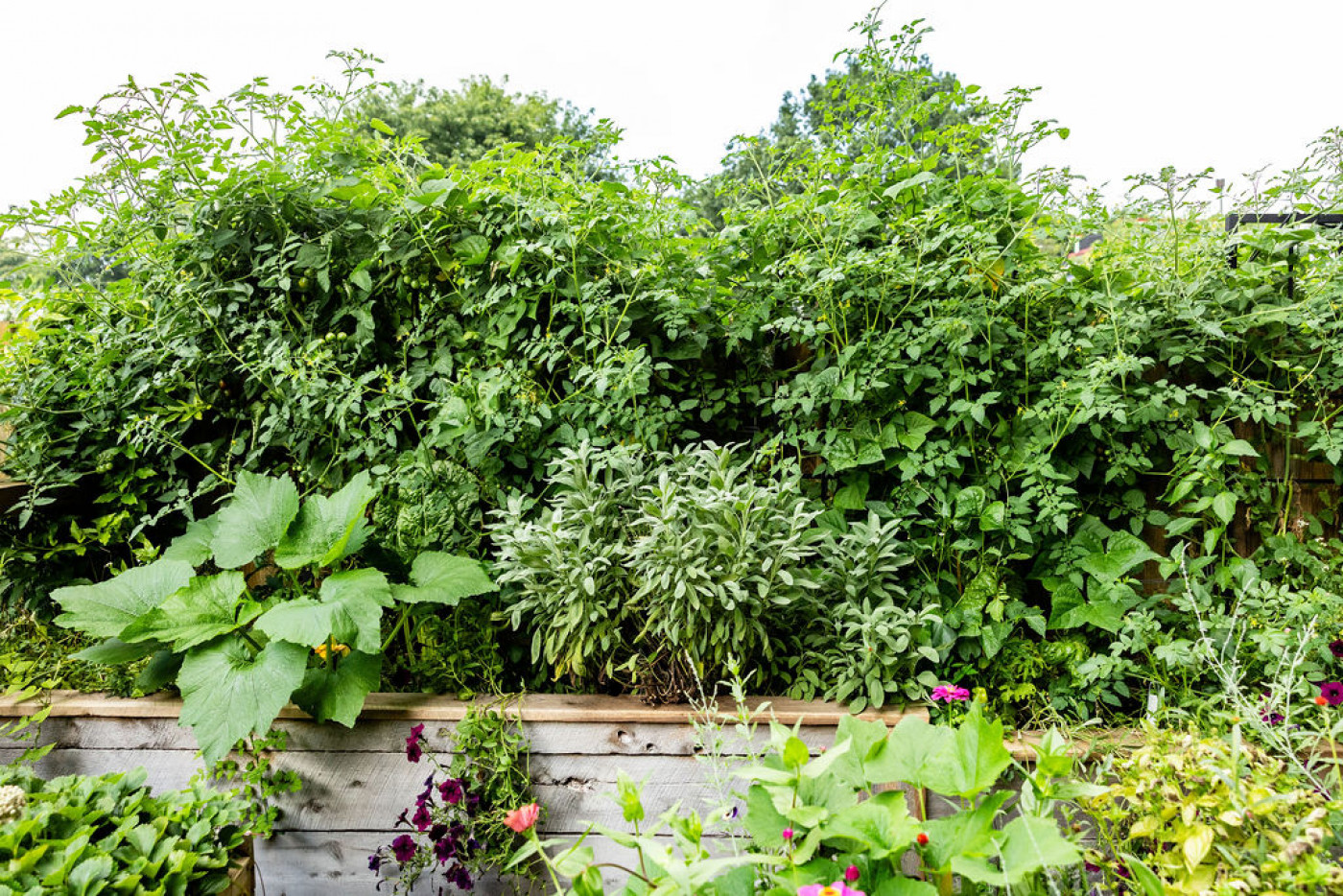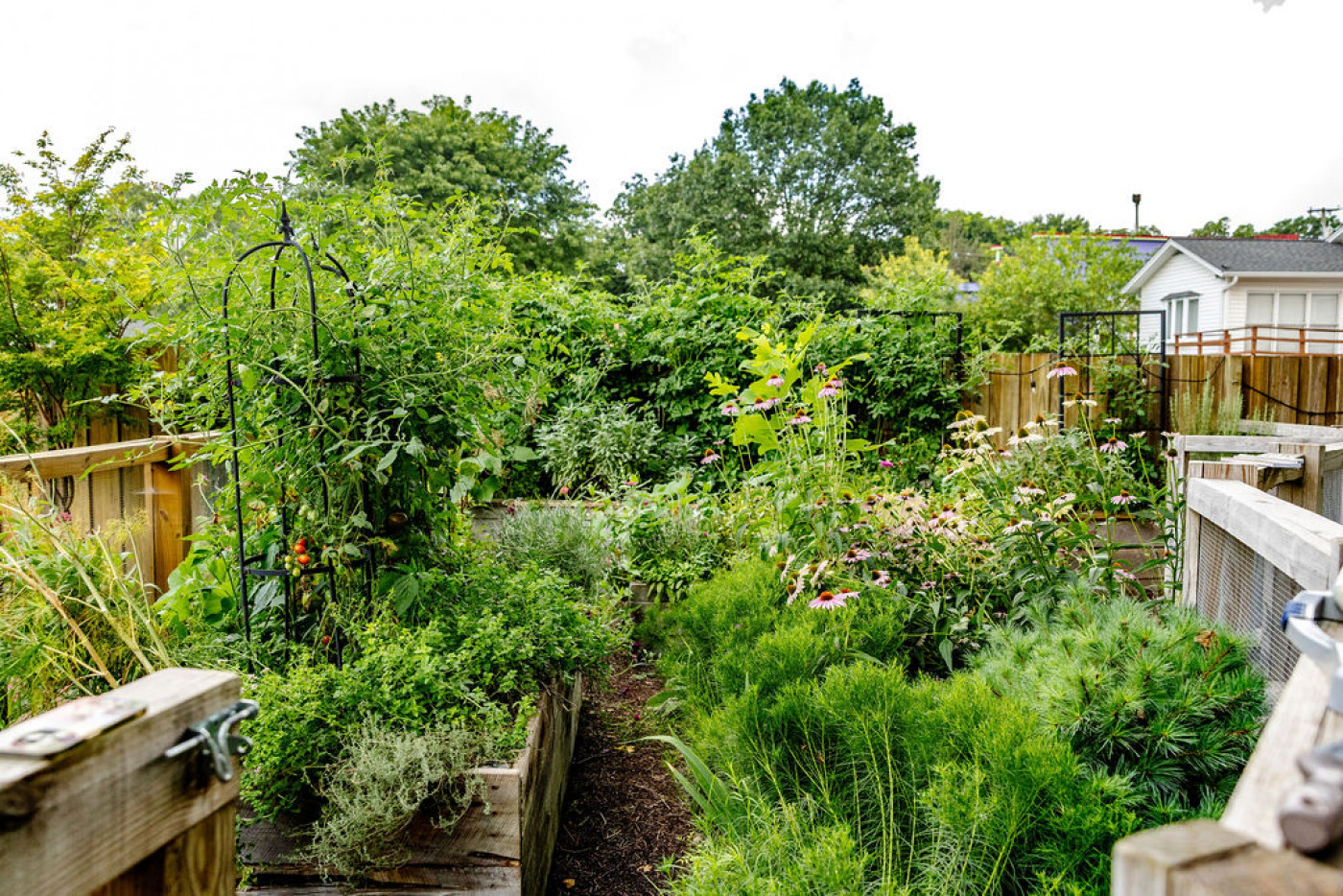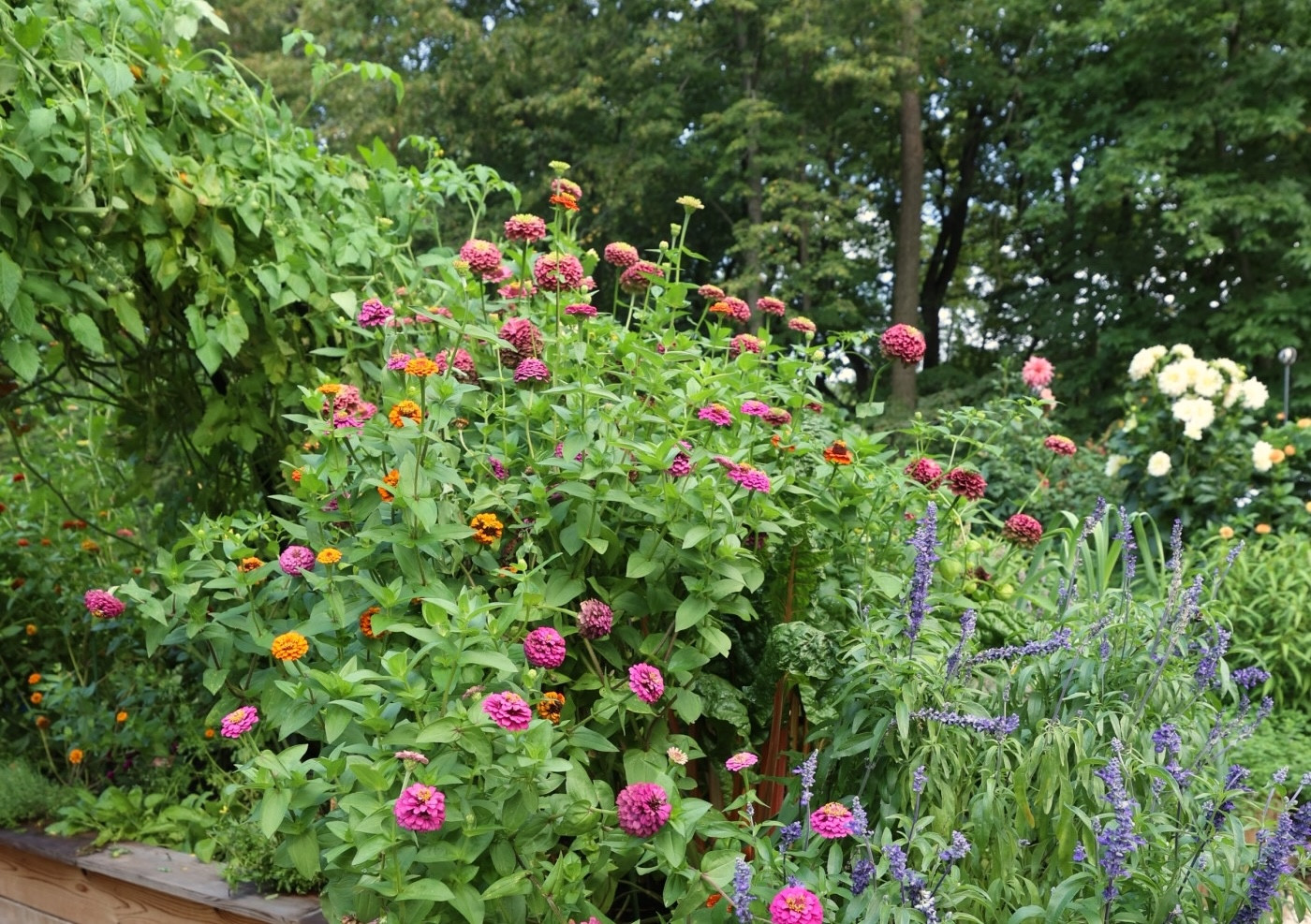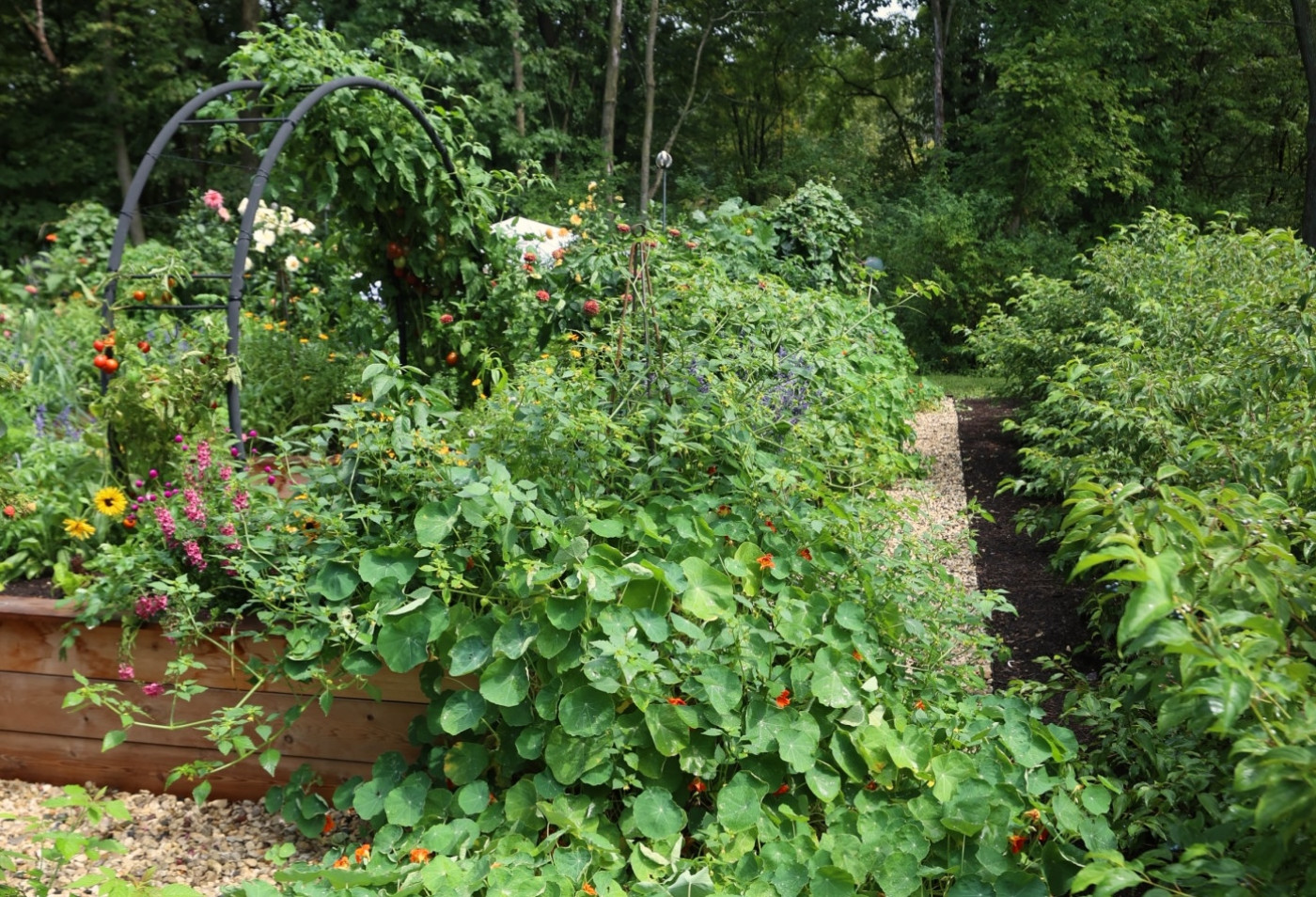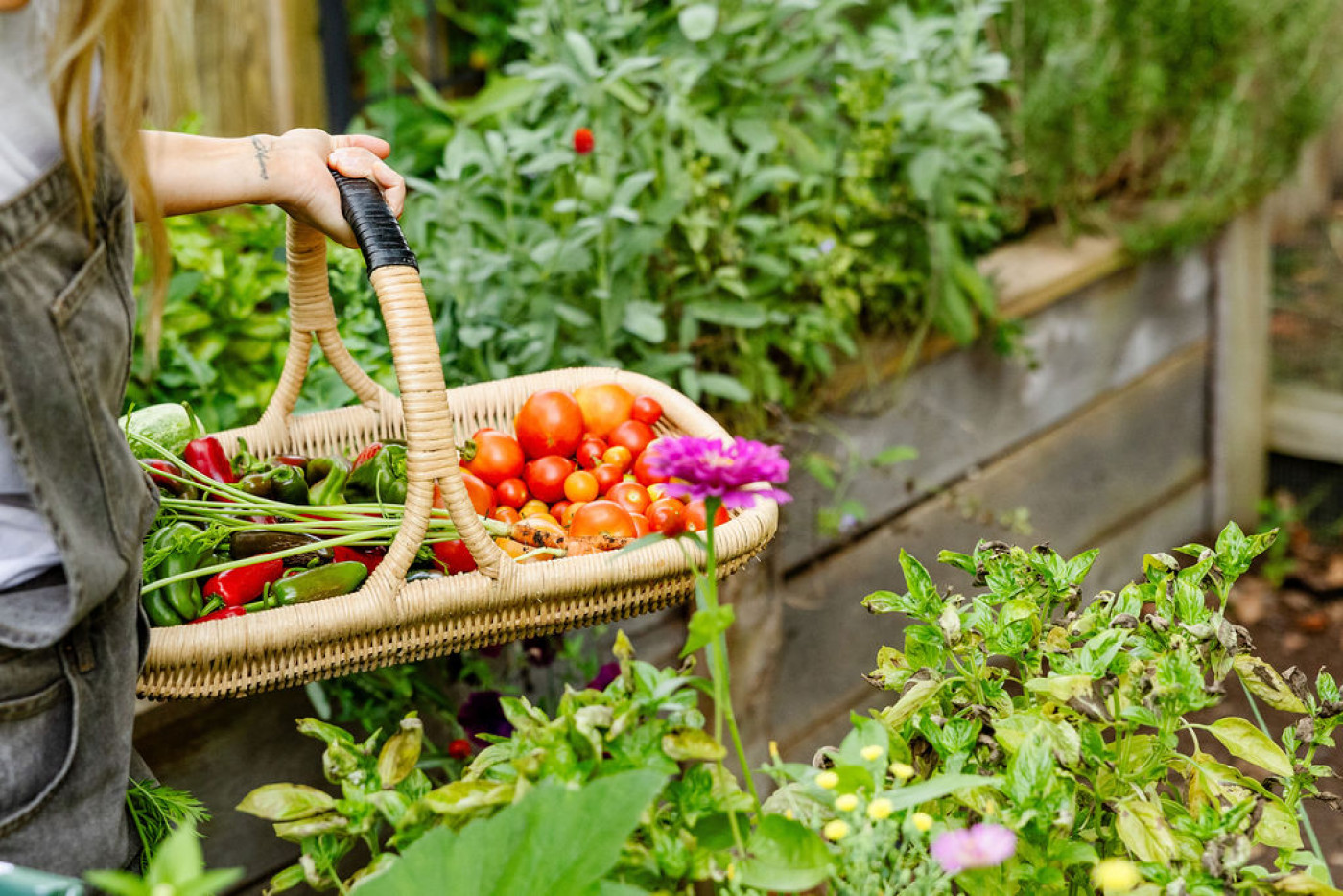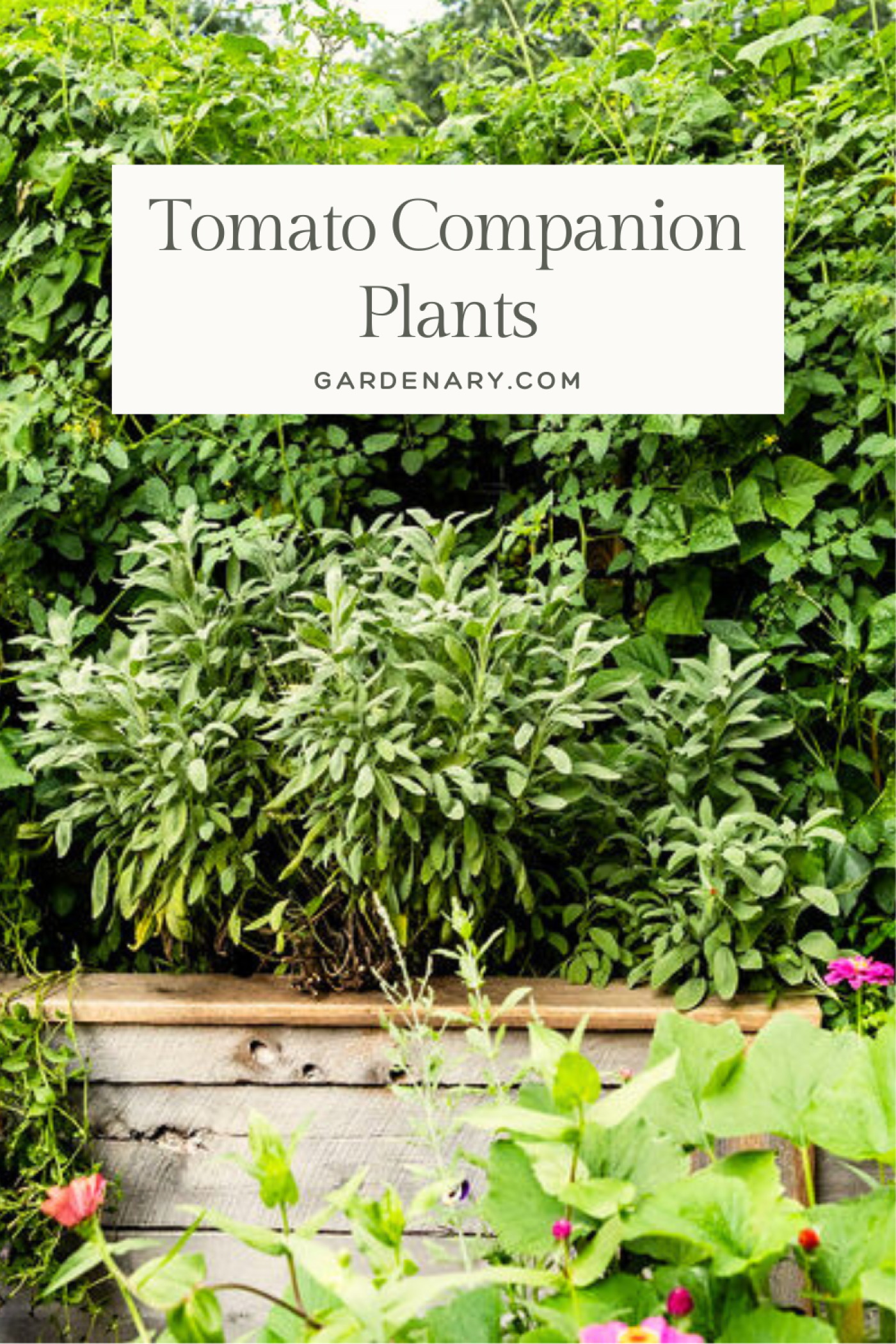Plant Herbs & Flowers with Your Tomato Plants
When I first started gardening, I planted 4 tomato plants in my little garden box. And nothing else.
It didn't take me long to regret planting this way. I waited months and months for those tomatoes to produce but ended up losing most of the fruits to the squirrels.
After growing these sad, solitary tomato plants, I had a realization: tomatoes need friends. If I filled the space around the tomatoes with herbs and flowers and veggies, I'd have things to harvest while I was waiting around for fruit. That way, I wasn't banking the success of my entire growing season on just one type of plant.
Now, I plant lots of smaller plants around my tomatoes.
At a Glance
- Planting flowers like marigolds and zinnias with your tomatoes attracts pollinators to increase tomato production and beneficial insects to help with organic pest control.
- Aromatic herbs like basil and rosemary repel a number of different tomato pests, and basil seems to keep tomato plants healthy and productive.
- "Bad" tomato companions include corn, potatoes, broccoli, fennel, and cabbage.
What Is Companion Planting?
Companion planting is the practice of planting specific crops close to each other to provide certain benefits, whether that's enhancing nutrient uptake, deterring pests, encouraging pollination, or increasing production.
Good tomato companions include plants that repel pests or attract beneficial insects to prey on those pests. These plants also need to grow in the same season as tomatoes and not be bothered by regular watering.
Let's look at which herbs, flowers, and root vegetables make the best (and worst) tomato companion plants.
How Tomatoes Grow Best
The best companion plants for tomatoes will share similar growing preferences, so keep these four things in mind when you're planning out your garden beds.
- Tomatoes love to grow in warm weather, when the temps range from 65 to 85°F (18.3 to 29.4°C). You should wait until all chance of frost has passed before you plant your tomatoes in the garden. In hot weather, tomatoes will struggle to form fruit.
- Give your tomato plants 8 to 10 hours of sunlight a day to maximize your fruit production. Smaller plants like herbs are ideal to grow around the base of tomatoes because they won't block too much sunshine from the leaves.
- Tomatoes take up a lot of nutrients from the soil. When they're fruiting and flowering, it's particularly important they get a phosphorus-rich fertilizer to ensure they have everything they need to stay healthy. (Learn more about how to feed your tomato plants.)
- Tomatoes need consistent water to form flowers and ripen fruit. Recently transplanted tomatoes should be watered every day. Established tomato plants appreciate one deep soak per week. The general rule is about 1 inch of water per week.


The Best Types of Plants to Grow with Tomatoes
There are so many tasty plants to grow in the warm season alongside your tomatoes. I recommend growing tomatoes in raised beds or containers that are at least 18 inches (45.7 cm) deep to accommodate their deep roots. With this raised bed height, you can grow pretty much any other annual fruit or veggie you'd like.
Let's first look at tomato companions that will help maximize your plant's productivity.
The Best Tomato Companion Plants to Increase Pollination
Flowers from the Daisy Family
If you're growing any type of fruiting plant, then you want to attract as many beneficial insects like ladybugs and even wasps into your garden by planting flowers throughout your space. These insects will make sure all your tomato flowers are pollinated, which will maximize your harvest.
Some of my favorite flowers to plant near tomatoes are calendula, cosmos, zinnias, and marigolds, from the daisy family. The flowers in this family are composite flowers, which basically means the center of each flower is actually made up of many smaller flowers. Pollinators love composite flowers because they can drink their fill in one spot.
Lavender
Lavender flowers draw in bumble bees, which practice a particularly effective kind of flower dance called buzz pollination. The scent of both the leaves and flowers of lavender also repels whiteflies, spider mites, flea beetles, and nematodes.
The Best Tomato Companion Plants for Organic Pest Control
Flowers from the Daisy Family
Those same flowers that attract pollinators also pull in lots of pest predators. Ladybugs and lacewings eat everything from aphids to small caterpillars. You might not love the idea of welcoming wasps into your garden, but there's actually a type of parasitic wasp (called a braconid wasp) that's harmless to humans but deadly to my least favorite garden pests: cabbage worms and tomato hornworms.
All of these pest predators are attracted to flowers for their nectar and pollen, so that's why you want to plant as many flowers in your garden space as possible.
Calendula is also an excellent trap crop, which means any aphids that wander into your garden will likely go for the calendula stems instead of your tomato leaves.
If you only grow one type of flowers around your tomatoes, I'd say make them some marigolds. Marigolds release a compound called pyrethrum that actually repels the moths that lay tomato hornworm eggs. Marigolds have also been scientifically proven to reduce root-knot nematode populations, another pest that can cause significant damage to tomato plants. This is one reason I love to plant marigolds along the border of my raised beds (another reason is their beauty).
Other great flowers to add near your tomatoes are nasturtiums, salvia, and sweet alyssum. Nasturtiums in particular can actually deter pests while still attracting pollinators.
Chives
Alliums, or plants in the onion family, make beneficial companions to fruiting plants in your vegetable garden. Onions, garlic, leeks, shallots, and chives all have a particular smell that deters many pests, including aphids and hornworms.
Since chives grow well in the cool, warm, and even hot season, I typically plant chives around the borders of my raised beds to serve as a near-year-round form of organic pest control. When they flower, they also attract pollinators like bees, butterflies, and beneficial wasps.
Herbs from the Carrot Family
Dill, cilantro, and parsley are wonderful herbs to grow near tomatoes. These herbs don't actually like the same temperatures as tomatoes. They prefer it a little cooler and will bolt, or go to seed, when the weather warms. That's a-okay. In fact, that's what we want for max protection for our tomato plants. The dainty flowers of these herbs are magnets for beneficial insects like bees, ladybugs, and the wasp that kills hornworms—an all-around win for organic pest control.
Herbs from the Mint Family
You can also grow tomatoes near any herbs from the mint plant family (think basil and then all the perennial herbs like rosemary, sage, oregano, and thyme). These herbs repel a number of different pests. Sage, for example, deters slugs, flea beetles, and spider mites, while thyme repels aphids, grasshoppers, and army worms. The blooms of these herbs attract parasitic wasps that kill hornworms.
Naturally protect your garden while adding beauty and biodiversity.
This curated seed set includes powerful herbs and flowers known to deter pests and attract beneficial pollinators, creating a balanced, organic ecosystem in your garden. Ideal for gardeners who want to grow without chemicals, the Gardenary Pest Control Collection features vibrant, fragrant plants that both beautify and defend your beds.
The Best Tomato Companions to Improve Tomato Plant Health
Basil
Tomatoes planted near basil tend to be more productive. The scent of basil can also repel tomato pests, including aphids, tomato hornworms, and whiteflies.
Plus, tomatoes and basil just go so well together in the kitchen.
Garlic
Garlic not only repels pests with its strong scent, it also has antibacterial and antifungal properties that can protect tomato plants from soil-borne disease.
Gardenary's Warm Season Garden Planner
This beautifully designed planner takes the guesswork out of gardening and helps you stay organized, inspired, and on track during the warmer months.
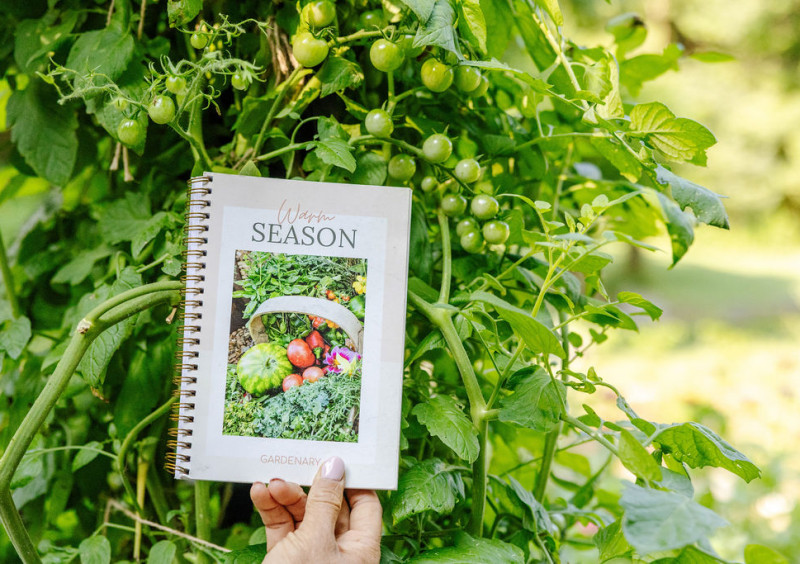
The Best Tomato Companions to Maximize Garden Space
Bush Beans
I love growing tons of bush beans around the base of tomato plants. The leaves of the fast-growing bean plants will shade the soil, which helps to retain moisture and nutrients.
Peppers
Tomatoes happily grow near peppers as long as the pepper plants don't grow too tall and block too much sunlight from the tomato leaves.
Some gardeners say not to plant tomatoes with peppers since they're from the same plant family (the nightshade family), but I've never had an issue with them attracting the same pests if my garden is filled with fragrant herbs and flowers.
Click on the pinterest icon below to save this image for later!
What Would a Raised Bed Filled with Tomatoes and Good Companion Plants Look Like?
The planting plan below is for a 4' x 4' raised bed in the warm growing season. There are short zinnias and basil plants in every corner for pest protection, beauty, and production. Purple bush beans can be packed in and will produce a ton of beans and keep the soil nice and covered.
You can plant at least 2 indeterminate tomato plants on each obelisk trellis. Instead of planting on the inside of the structures, plant along the outer base so that you can easily tend the vines.
This right here would be a really beautiful, colorful, and productive bed.
The Worst Companion Plants for Tomatoes
Plants that gardeners typically avoid planting near their tomatoes include things like corn and potatoes. I don't recommend growing either of these in your raised beds anyway. (Learn more about which plants shouldn't be grown in raised beds.)
Other bad companions for tomatoes include broccoli and cabbage, which can stunt the growth of tomato plants. These plants should be grown when it's much cooler so that they're finishing up around your last frost date, before it's time to add tomatoes to the garden.
Lastly, fennel is said to secrete a chemical that inhibits tomato plant growth.
Fill Your Garden with Leaves, Roots, and Fruit!
Okay, now that you know what plants grow best with your tomato plants, there won't be any more sad tomato plants all by themselves in garden beds, right? Friends don't let friends plant tomatoes alone.
Grow your fruiting plants surrounded by lots of herbs and flowers so that you have plenty of things to harvest while you're waiting on those tomatoes to finally ripen already. You'll be more likely to step outside and tend your tomatoes if you know there's something else waiting on you to harvest it.
Thanks for being here and helping to make gardening ordinary!

